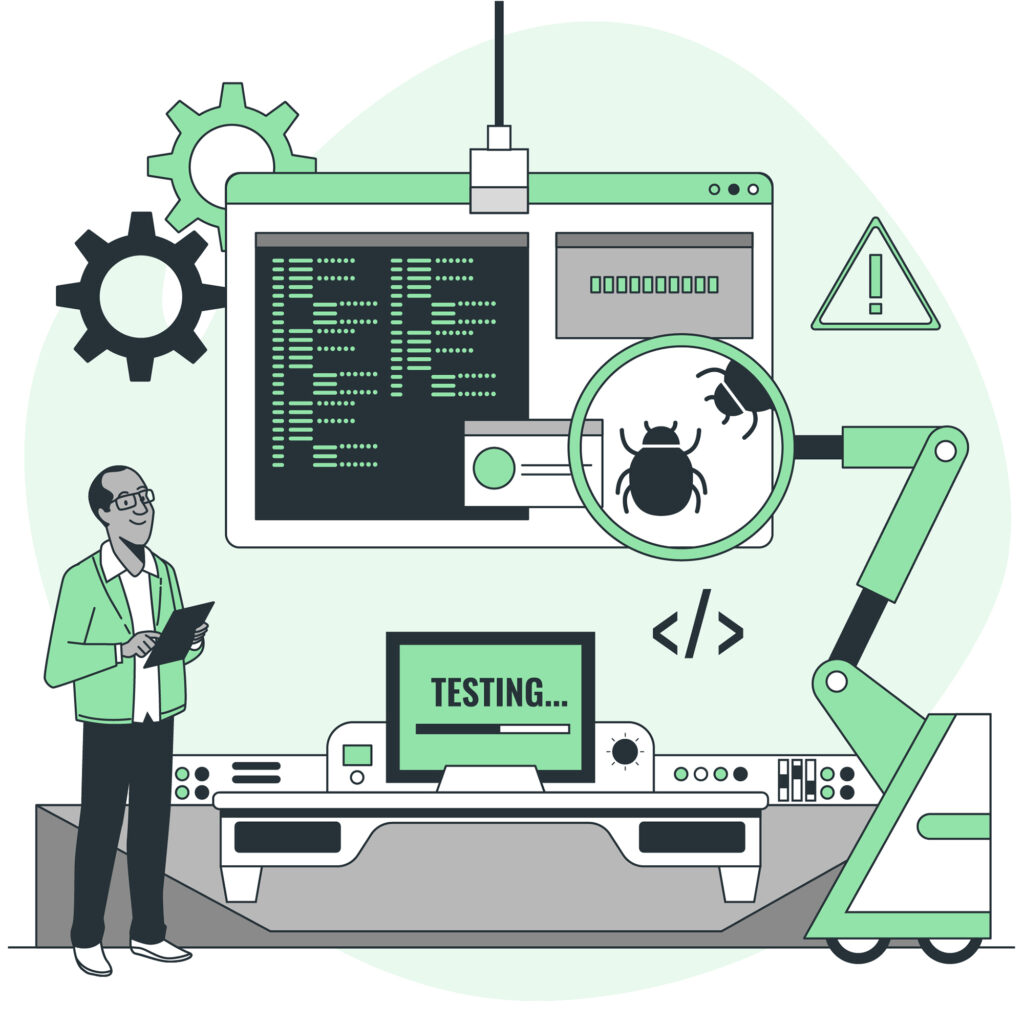In today’s digital age, the importance of security in the software development process cannot be overemphasized. As businesses become more reliant on technology, they face increasing cyber threats that can cause significant financial and reputational damage. This is where DevSecOps comes in, an approach that integrates security into every phase of the software development lifecycle, allowing businesses to create secure, robust, and reliable applications at a faster pace.

What is DevSecOps and How does it work?
DevSecOps is a practice that brings together development, security, and operations teams to collaborate and deliver secure applications by following the DevOps principles.
By incorporating security practices such as SAST, DAST, OAST, Detecting Secrets in Code, and Compliance as Code into the development process at each stage, businesses can identify and fix security vulnerabilities in the early stages, before they can become a major problem.
This is particularly important for small and upcoming businesses, who may not have the resources to hire dedicated security teams or invest in expensive security tools. Which helps organizations reduce costs by streamlining their process and making them more efficient.
With DevSecOps, organizations can ensure they’re delivering secure applications faster than ever before.
You might come across various abbreviations for DevSecOps, such as SecDevOps, OpsDevSec, and Secure DevOps. These all refer to the same thing and are generally used to emphasize a particular priority in organizations.
Benefits of DevSecOps in Software Development:
- Security Inbuilt: By embedding security into the SDLC, organizations can identify and remediate security issues earlier in the development process.
- Reduce risk: DevSecOps helps organizations reduce the risk of data breaches and other cyber attacks by building more secure applications.
- Increase speed: By automating security testing through continuous integration and continuous delivery (CI/CD), DevSecOps enables organizations to release software faster without sacrificing security.
- Enhance collaboration: DevSecOps encourages collaboration between development, security, and operations teams, leading to better communication and more effective security practices.

Best Practices for Enabling Secure DevOps (DevSecOps)
Getting started with DevSecOps can seem daunting at first, but it doesn’t have to be. Here are some key steps to help small and upcoming businesses get started with DevSecOps:
Automating security as code is a critical part of DevSecOps, which involves implementing security measures throughout the development process, from design to deployment, as code with minimal or no manual intervention.
In this article, we will discuss key practices and high-level overview of getting started with DevSecOps
6 Essential Steps to Implementing DevSecOps Successfully
Establish a Security Culture:
The first step towards a successful DevSecOps strategy is to establish a security culture within the organization. This means creating an environment where security is a priority, and everyone from developers to executives takes responsibility for it.
This can be achieved by understanding the primary business needs and drafting security policies around them, then clearly communicating them to all stakeholders. Ensuring that standard security policies are communicated across the organization, providing regular training, having clear documentation, and keeping open communication channels between development, security, and operations teams are essential for success.
Identify Security Requirements
Once you have established a security culture, the next step is identifying your security requirements. This involves determining the level of security needed for your applications and the potential risks they may face.
Not every project in your organization needs to be a top priority. For example, a project dealing with customer data and personally identifiable information should be a priority, while a project in its alpha phase may have a reduced priority.
The OWASP DevSecOps Maturity Model is a community-built framework that can help you to identify the levels of implementation needed for adequate security.
By understanding your security requirements, you can create a roadmap for implementing security practices and tools.
Automate Security Processes
One of the key benefits of DevSecOps is the ability to automate security processes. This allows you to identify and address security issues in real time, reducing the risk of vulnerabilities being exploited. Automation can also help to streamline security processes, making it easier for developers to implement security practices without disrupting their workflow.
Security automation, when enabled in a developer-friendly way, can help facilitate quick adoption across various deployment teams.
Integrate Security Tools
There is a wide range of security tools available that can help to identify and address security issues in your applications. These include static code analysis tools, vulnerability scanners, and penetration testing tools. By integrating these tools into your development process, you can identify and fix security issues early on, before they become major problems.
Here is a GitHub repository called “Awesome DevSecOps” that contains a comprehensive collection of resources to help you get started.
Implement Continuous Security Testing
It helps to detect and prevent security breaches before they occur and can help identify potential vulnerabilities that need to be addressed. By implementing Continuous Security Testing, which involves testing applications for security vulnerabilities on an ongoing basis rather than just at the end of the development cycle, one can ensure the security of their applications. This process allows organizations to stay ahead of the latest cyber-security threats and trends, ensuring they remain secure in the ever-changing digital landscape.
Monitor and Respond to Security Events
Finally, it is important to monitor and respond to security events in real time by setting up alerts and notifications and having a plan in place to respond to them. By monitoring security events, you can quickly identify and address potential security issues, thus reducing the risk of a major security breach.
Conclusion:
DevSecOps is a powerful approach to software development that can help small and upcoming businesses create secure and reliable applications at a faster pace. By establishing a security culture, identifying security requirements, automating security processes, integrating security tools, implementing continuous security testing, and monitoring and responding to security events, businesses can simplify their day-to-day security efforts through automation.This not only reduces the risk of cyber threats, but also saves time and resources, allowing businesses to focus on their core competencies and achieve their goals.
References:
- https://devsecops.owasp.org/
- https://owasp.org/www-project-devsecops-guideline/
- https://github.com/devsecops/awesome-devsecops
- https://github.com/TaptuIT/awesome-devsecops
